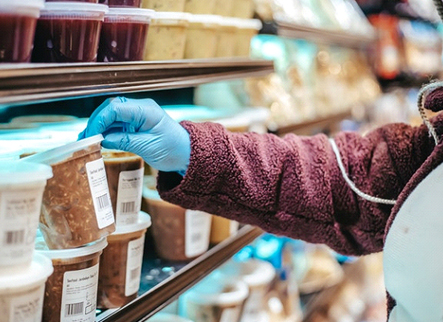Are retailers ready for Natasha’s Law?
From October 2021 Natasha’s Law will come into effect. This new law will now make it a legal requirement for food items that are pre-packed for direct sale (PPDS) to clearly display:
⦁ The name of the food.
⦁ Full ingredients list, with allergenic ingredients emphasised (for example in bold, italics, or a different colour).
This new legislation will apply to any business that trades in PPDS foods all across England, Scotland, Wales, and Northern Ireland.
The legislation has been introduced in response to a lobbying group led by the parents of Natasha Ednan-Laperouse. The teenager who lost her life after consuming a pre-packaged meal that did not clearly state its allergen information. At the time food retailers were not required by law to have allergen listings on their food packaging. Now, due to her parent’s lobbying efforts, allergen sufferers will have better protection and confidence when buying pre-packaged foods. According to research 1 in 3 people in the UK population suffers from a food allergy.
Are food retailers ready?
Due to the pandemic, The FSA started a ‘one year to go’ campaign in October 2020 to raise awareness to food retailers about the changes coming into effect in 2021 which may have been overlooked due to the pandemic and on and off lockdowns.
The Co-op already provides “full allergen information on the packaging and shelves for our PPDS in-store bakery range,” says a Co-op spokesman. Tesco and M&S are both rolling out the necessary changes ahead of the deadline. “We already provide our customers with allergy information for products packaged in-store and in 2019 began the process of expanding this to full ingredient labelling,” says an M&S spokeswoman. Asda, Sainsbury’s, and Waitrose similarly say they will be compliant by October. “We’ve been working continuously since the legislation was published to ensure our products, systems, and processes affected are updated accordingly,” says a Waitrose spokeswoman. A Sainsbury’s spokesman adds: “Safety is our highest priority and we are reviewing all labelling to make sure we are compliant by later this year.”
Complications for smaller food retailers
While large, big-named food retailers will have the resources to be compliant by the October 2021 deadline the concern is for smaller food retailers such as bakeries and cafes. Those making their food in their back kitchen then packaging up the food to sell out in their storefront will have to list what ingredients they have used. The questions that remain are just how detailed do these ingredient listings have to be? For example, if a typical ingredient in your pre-made sandwiches includes Worchester sauce does this now mean the food retailer has to individually list the ingredients in the Worchester sauce they are using alongside any other ingredients they have used?
Another complication is what counts as PPDS foods? Are slices of cakes and other foods that are put on display in glass containers at counters with no packaging, still require you to list the full ingredients? Will soup or hot foods, that are sold as on-the-go food, still require strict ingredient listing despite not being traditionally packaged and sealed like, for example, a sandwich would?
It would seem there are still grey areas and ways to manoeuvre around the new legislation and in some instances, it will be left up to the food retailer’s own morals and ethics on how they choose to implement this new legislation. In addition, there is always going to be the danger of cross-contamination, especially in the kitchen of smaller retailers.
For any food retailer that does have any questions regarding the implementation of this law their first port of call should be visiting the Food Standard Agency’s website. On there is helpful information regarding which foods are considered to be PPDS and which are not.
How to overcome the challenges
What food retailers will have to invest in, if they do not do so already, are food labelling technologies that will make it easy for them to add and adjust ingredients, depending on the foods they prepare, and easily print them off and stick them onto their food packaging. This will allow multiple staff members to work within their food development process to easily label PPDS foods and make sure they are in line with Natasha’s law.
Like what you’ve heard so far? Then get in touch
If we’ve piqued your interest, then get in touch. Take a look at some of our other blogs and case studies to see how we’ve assisted and supported a variety of businesses.
Please contact one of our friendly and knowledgeable sales reps if you are looking for Online Ordering, EPOS, Payments, or Loyalty systems. If you’re curious about how motto can assist you, fill out our form and get started on your motto journey today.


